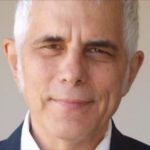
By Brian Koffman, MDCM (retired) MSEd
Immunity Part 2
1: Innate immunity is our fastest and most biologically primitive immune defense. It is also nonspecific. It includes physical barriers, such as the skin, and chemicals toxic to invading pathogens, such as bacteria and viruses. However, its main way of controlling infections is by eating and digesting the invaders (phagocytosis). This is primarily done first by the macrophages (big eaters), followed by the neutrophils. Macrophages are cells that develop from monocytes that leave the blood stream. Neutrophils are the most common type of white blood cells.
2: Adaptive immunity, also called acquired immunity, is slower, but more targeted. Our immune system learns from exposure to the foreign antigens or proteins found on the invaders. Vaccines can speed up this more potent response as our B and T cells memorize the signature of the bacteria or virus, such as the receptor binding domain (RBD) of the spike protein in the case of SARS-CoV-2 virus.
3: Adaptive immunity can be humoral (liquid) where B lymphocytes become plasma cells that form antibodies that float in the blood and protect against specific threats.
4: It can also be cellular, where killer T lymphocytes do the actual targeted killing of the enemy that they have been trained to recognize and destroy.
5: When a threat comes along that the adaptive immunity recognizes, from either prior infection or immunization, the response is quicker and stronger and more likely to prevent serious illness, as demonstrated by the COVID-19 vaccines.
To read Immunity Part 1, please click here.
Dr. Brian Koffman, a well-known retired doctor, educator, and clinical professor turned patient has dedicated himself to teaching and helping the CLL community since his diagnosis in 2005. He serves as the Executive Vice President and Chief Medical Officer of the CLL Society Inc.
Originally published in The CLL Society Tribune Q3 2021.


